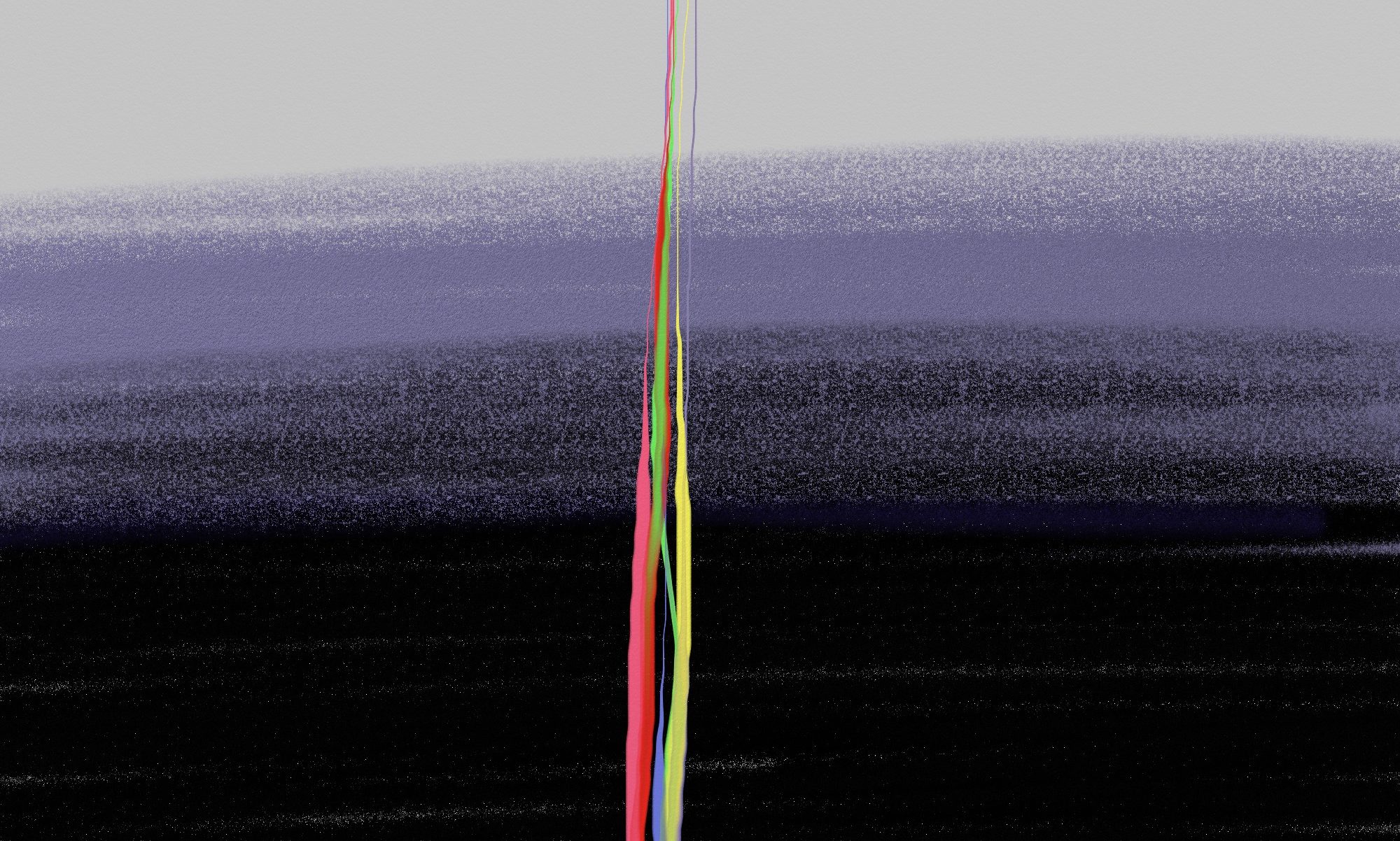#0858 Night2
Larger Image.
Reflections on variety & repetition follow:
The question of the variety of these sketches is not new, it was questioned right at the start. And then later I embraced it. Now I think there was a common theme that is hard to see in the FORM rather than the content.
For all that I am repeating crosses.
I loved reading this the other day by Henry Geldzahler:
The problem of creative fecundity and excitement and a maintained level of inspiration and execution is much more acute in the stripped and repeated images of today’s painting. For the painter limiting himself to a self-imposed and invested vocabulary, simple shapes and their relationships, there is literally no place to hide. This is the strength of the art and its emptiness when it goes bad. All is out in the open for everyone to see. That doesn’t make it easier to see, but paradoxically, more difficult. There is no anecdote, no allusion except to other art, nothing outÂside art itself that might make the viewer more comfortable or give him something to talk about.
Actually, the effort toward making differences from picture to picture is not art; it is “artiness,” exactly that which is extraneous to the picture making. The attempt to make it look different can have nothing to do with the generative processes that produce the painting. Such an attempt can only be socially ordained, as for instance, in the effort toward a more interesting or varied show. If the picture is painted in exactly the way it has to be, it will look different enough from the last picture, which had to be painted in the way it was, to satisfy anyone who is interested in looking long and hard at painting; and that finally is the only audience the pictures will have anyway.
Henry Geldzahler, “The Art Audience and the Critic” 1965 in Making it New, Harper 1994 Page23
So yes there is a “a self-imposed and invested vocabulary” in the crosses, also more to the point in the persistent digital / physical exploration. And that does come together here with the crosses.
